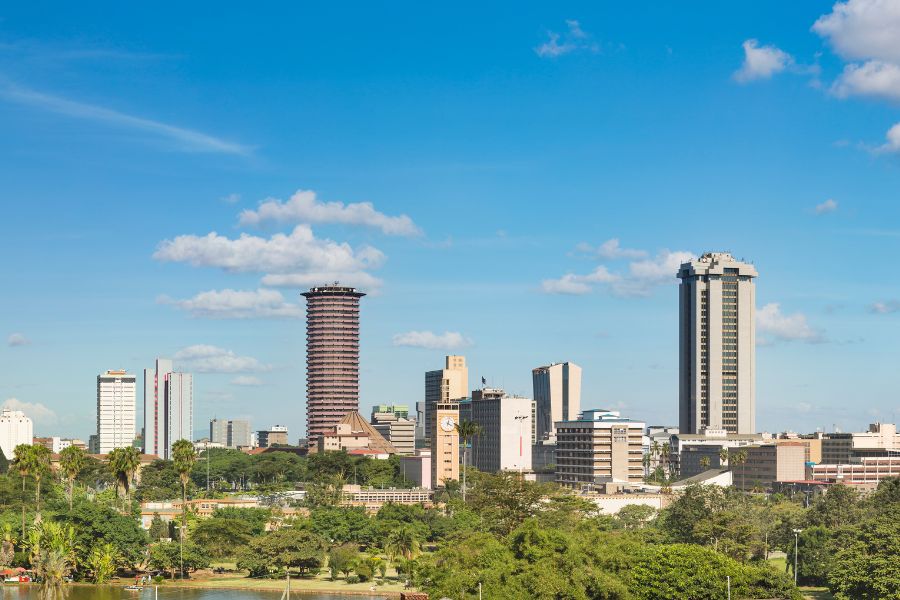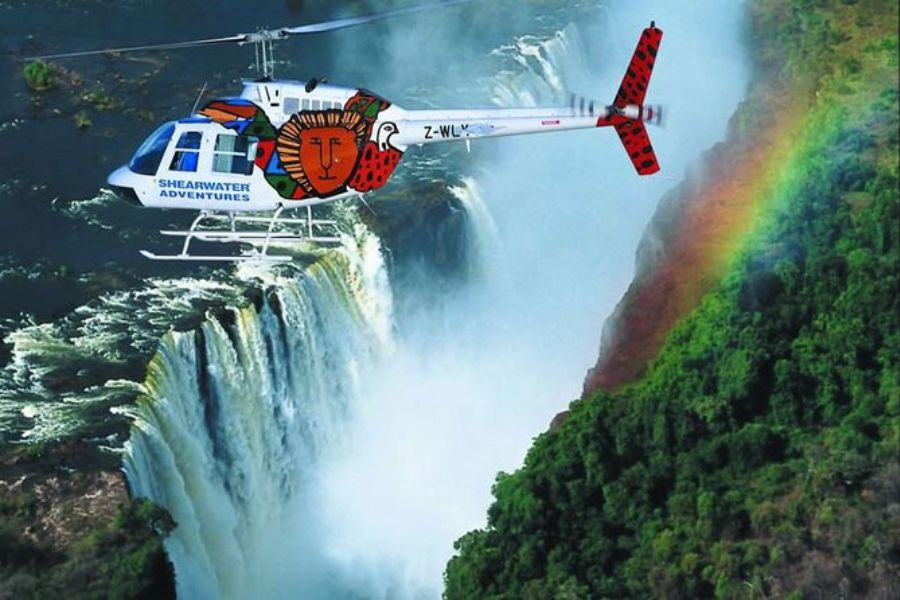- The National Museums of Kenya (NMK) carries out heritage research, and has expertise in subjects ranging from paleontology, ethnography and biodiversity research and conservation. Its headquarters and the National Museum (Nairobi National Museum) are located on Museum Hill, near Uhuru Highway between Central Business District and Westlands in Nairobi.
- The Society's main goal has always been to conduct an ongoing critical scientific examination of the natural attributes of the East African habitat. The museum houses collections, and temporary and permanent exhibits. Today the National Museum of Kenya manages over 22 regional museums, many sites, and monuments across the country (source - Wikipedia)
THE HISTORY OF NAIROBI NATIONAL MUSEUM (NNM)
The idea of a Museum in Kenya came on March 25th 1909, when ten people met at the house of the then Lieutenant Governor, F.J. Jackson, for the purpose of considering the formation of a Natural History Society for East Africa. After the formation, its activities involved making scientific collections of natural history specimens, where an obvious need to house and exhibit them arose. The solution was a museum.
NATIONAL MUSEUM IS BORNE
Kenya became independent in 1963. The Coryndon Museum was renamed "National Museum" in 1964 and was included in a new system, the "National Museums of Kenya." In 1967 Richard Leakey was having irreconcilable differences with Louis Leakey, his employer in the Centre, and decided to improve the National Museum.
His main objection was that it had not been Kenyanized. He and supporters formed the Kenya Museum Associates, which obtained an observer's seat for Richard on the board from Carcasson in exchange for a 5000-pound contribution. Richard did not do much observing, as he departed for the first Omo expedition.
The Kenya Museum Associates included Joel Ojal, the museum overseer in the government. On his return from Omo Richard gave his ideas for improvement directly to Joel, who asked the chairman, Sir Ferdinand Cavendish-Bentinck, to place Richard in a senior position and begin replacing the board with Kenyans of Kenyan extraction, as there were only two out of 16 in that category. The penalty for inaction would be removal of government funding.
Richard was at first offered a part-time executive position, which he turned down. Over the next few months much of the board was replaced and in May 1968 the new board offered Richard a permanent post as administrative director, with Carcasson to be retained as scientific director. However, Carcasson resigned and Richard became director. (source - Wikipedia)
NATIONAL MUSEUMS GALLERY
- The Hall of Kenya is dedicated to highlighting the country's unique tangible and intangible heritage.
- In this gallery Kenya's nature, culture and history meet. The objects on display are a testimony to the country's diverse and rich heritage.
- All the information on display, the objects, and all research works can be found in the Cultural Anthropology department at the museum.
- Joy Adamson (1910–1980) was an illustrator, conservationist and author.
- She is known for her contribution to the conservation of Kenya’s natural and cultural heritage, winning her international acclaim.
- Joy Adamson was a colorful, if at times controversial, character whose work continues to affect how people view conservation.
- Much of her work is immortalized not only in her illustrations, but in her books and films, which have been pivotal in preserving the diversity and richness of Kenya’s people and nature.
- Because of Joy’s inspirational efforts, people around the world now consider how they can preserve their own cultural and natural heritage.
- All works by Joy Adamson are housed at the Archives section in the Earth Sciences department at the museum.
- This gallery contains artwork by Joy Adamson featuring various Kenyan communities in traditional attire.
- Life amongst Kenyan communities is filtered through different stages.
- From birth, through youth to old age, death and transition into ancestry.
- This gallery samples cultural practices from Kenya’s communities as associated with these different stages in life.
- There is a wealth of material and intangible cultural heritage to be appreciated in this gallery.
- All information on display here can be found in the Cultural Anthropology department at the museum.
- They came from far and wide, in all colors and sizes, from the most primitive to the most advanced and found a home in the Birds of East Africa gallery, showcasing the rich diversity of birds in the region.
- The Osteology section in the Zoology department keeps all the information showcased here.
- East Africa is one of the world's richest regions for birds, and holds more than 1300 species.
- The Great Hall of Mammals traces the development of mammals over time, with a focus on their adaptations to movement, feeding and protection.
- The gallery confronts the visitor with points of congruence as well as divergence in the make up of the mammalian world.
- To access further information, the Mammalogy section in the Zoology department are the ones to consult with.
- Get ready for a harmless close-up experience with some of Kenya’s renowned safari favorites, including the Big Five: lion, leopard, rhinoceros, elephant, and Cape buffalo.
- Perhaps the most famous elephant in the world, Ahmed was known for his large tusks and put under 24 hour protection in Marsabit National Park by Kenya's first president, Kenyatta.
- Ahmed's skeleton, with the original tusks, can be found in The Great Hall of Mammals inside the museum and a life-size model can be found in the courtyard of the main gallery building.
- A unique collection, which points to Kenya as the cradle of humankind, is on display in this gallery.
- The gallery traces human existence as evidenced by fossil findings across Kenya.
- All information, artifacts (fossils) and research work can be accessed through the Earth Sciences department at the museum.
- A hotbed of archaeological discoveries
Kenya has fossil evidence telling almost the entire human evolutionary story. The National Museums of Kenya holds more than 350,000 fossils in its collection, about 700 of which belong to ancient humans.
- The gallery highlights Kenya’s history in three major phases: pre-colonial Kenya, the period of colonial rule, and independent Kenya.
- Key historical events that have shaped the lives of Kenyans are highlighted, including the Kenya-Uganda Railway, land alienation, and the two world wars.
- For more information on Kenya's history, the Cultural Anthropology department has it all.
- The museum's temporary galleries highlight some of the most exciting contemporary artists and aspects of Kenya and Africa.
- The Museum extends services to individuals and institutions that wish to exhibit any information they deem important.
- A great example would be that of the Central Bank of Kenya (CBK) who created an exhibition on the Kenya shilling's evolving history, dubbed 'the Numismatic Exhibition'.
- Sacred Mijikenda Kaya Forest
- Kenya Lake System in the Great Rift Valley
- Lake Turkana National Park
- Fort Jesus Museum
- Thimlich Ohinga
- Lamu Old Town
- Mount Kenya National Park/ Natural Forest
- Properties Submitted on Tentative List
SITE AND MONUMENTS
-
Olorgesailie
-
Takwa Ruins
-
Thimlich Ohinga
-
Songhor
-
Siyu Fort
-
Jumba La Mtwana
-
Koobi Fora
-
Mnarani
-
Uhuru Gardens
















